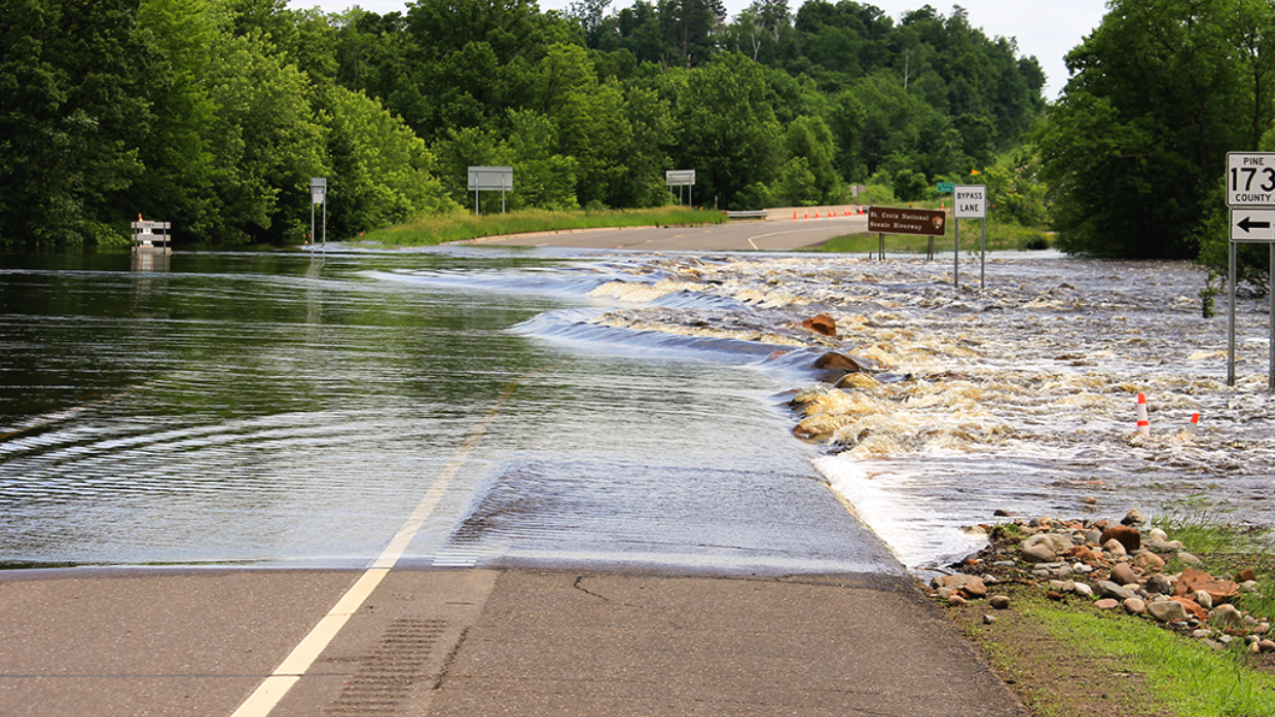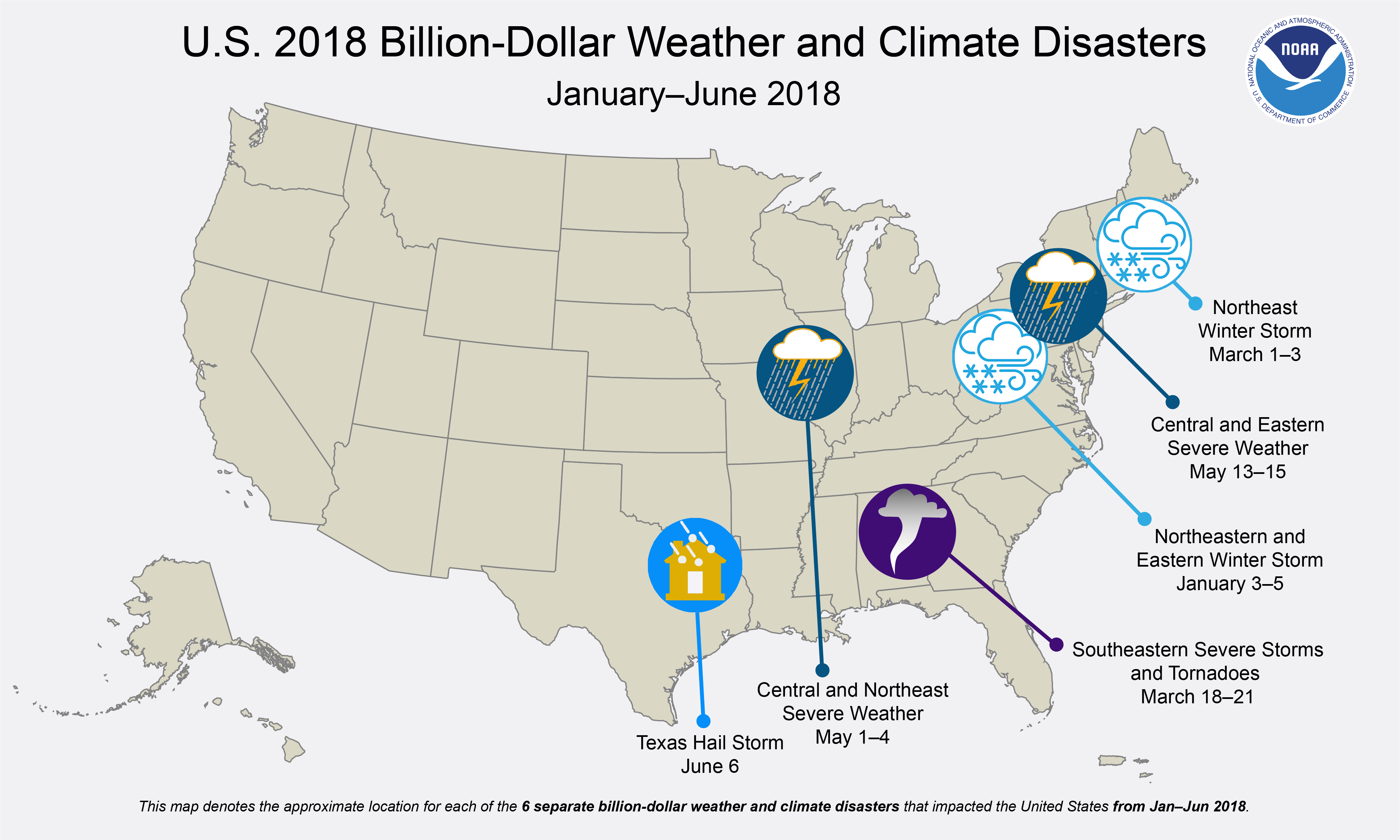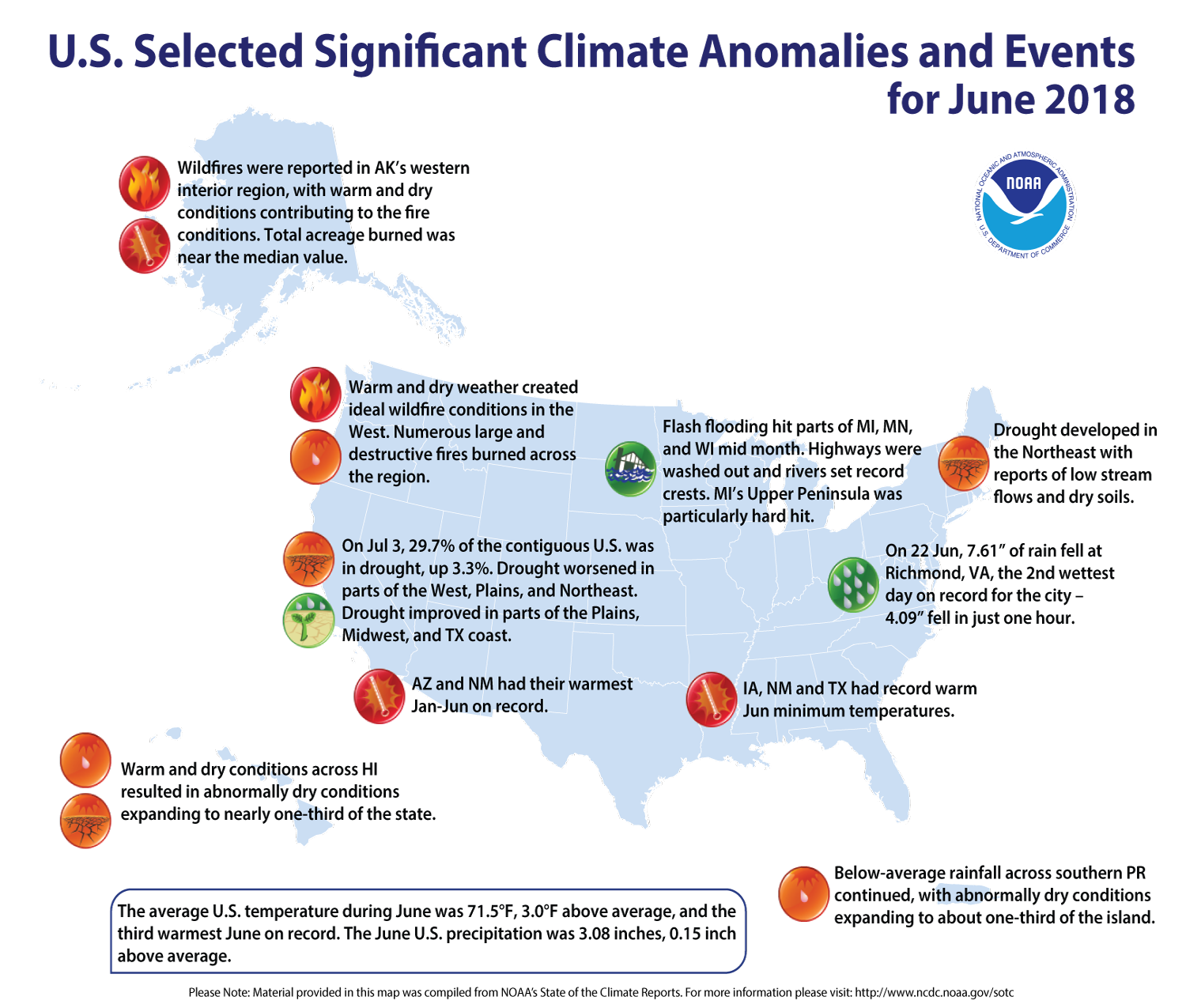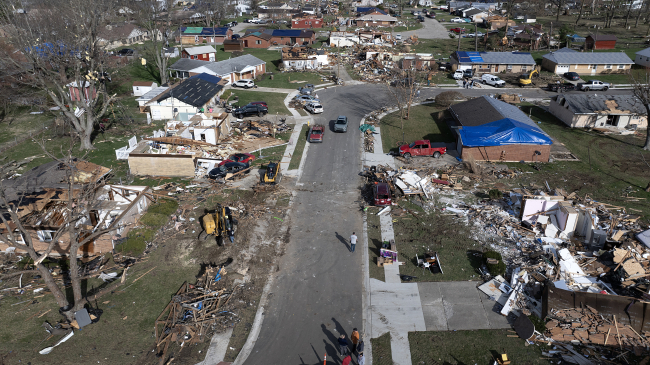Nation hit with 6 billion-dollar disasters so far this year
Hot temperatures continued to bake the U.S. last month, making it the third warmest June on record.

A cresting St. Croix river in Wisconsin overtakes a portion of highway. Parts of the Midwest saw flash flooding and record-high river crests in June. (Photo taken June 19, 2018, and posted online by staff from the Saint Croix National Scenic Riverway.) (Image credit: National Park Service)
We’re halfway through 2018 and the U.S. has already experienced six billion-dollar weather disasters. These include four severe storms and two winter storms that were responsible for 36 deaths combined and caused significant and costly damage.

Let’s see how the month of June and the year to date fared in terms of the climate record:
Climate by the numbers
June 2018
The average June temperature across the contiguous U.S. was 71.5 degrees F (3.0 degrees above average), making it the third-warmest June in the 124-year record. The warmer temperatures stretched across much of the lower U.S., but near and below-average temperatures prevailed in the Northwest and Northeast, according to scientists at NOAA’s National Centers for Environmental Information (NCEI).
The average precipitation for June was 3.08 inches (0.15 inch above average), which ranked near the middle of the record books. Parts of the U.S. experienced significant flooding, with areas of the Midwest recording much-above average precipitation. Portions of the West and South saw below-average precipitation.
Year to Date I January–June
The average U.S. temperature for the year to date (January through June) was 49.4 degrees F, 1.9 degrees above normal. It was the 14th warmest YTD on record with an average precipitation total of 15.78 inches, (0.47 of an inch above average).

More notable climate events
-
Relentless rains fell: Rain and floods were a big story last month. On June 22, 7.61 inches of rain fell in Richmond, Virginia – 4.09 inches in just one hour. Flash floods hit areas of Minnesota, Michigan and Wisconsin, which washed out highways and set records for high river crests.
-
Drought increased: Just under 30 percent of the contiguous U.S. was in drought as of July 3rd, up 3.3 percent from late May. Dry conditions worsened in parts of the West, the Plains, the Northeast and in Puerto Rico. However, drought did improve somewhat in other areas of the Plains, the Midwest and along the Texas coast.s
-
Wildfires burned in the West: Warm and dry conditions sparked numerous, large and destructive wildfires across the West, including in Alaska, California and Colorado. More than 50 wildfires were reported in Alaska, and warm, dry conditions triggered large fires in the Northwest U.S.
Find NOAA’s report and download the images on the NCEI website.



